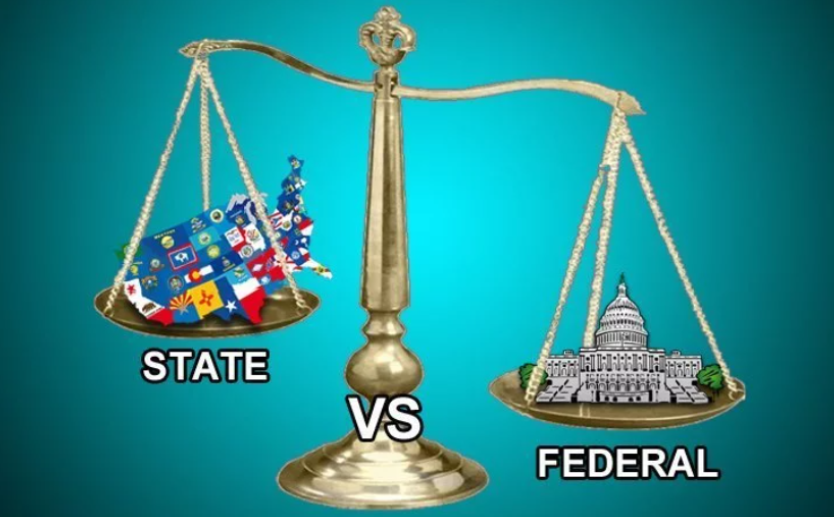
Introduction: Understanding State Income Tax vs. Federal Tax Strategies in 2025
In 2025, it’s crucial to understand the difference between state income tax and federal tax strategies. Each tax system operates differently, and how you manage both can significantly impact your overall tax burden. While federal taxes fund national programs, state income taxes help pay for services specific to your state. Knowing the differences and the best strategies to use for both taxes can help you save money and avoid surprises when tax season arrives.
What is Federal Income Tax?
The federal income tax is a tax you pay to the national government of the United States. It is based on how much you earn each year. In 2025, the IRS (Internal Revenue Service) uses a progressive tax system, which means you pay a higher percentage as your income increases. For example, a person earning $50,000 will pay a lower percentage in taxes than someone making $200,000.
Federal Tax Strategies for 2025:
- Tax Deductions – Deductions reduce the amount of income that is taxed. Examples include deductions for mortgage interest or student loan interest.
- Tax Credits – Tax credits directly reduce the amount of taxes you owe. Popular credits include the Child Tax Credit and the Earned Income Tax Credit.
- Retirement Savings – Contributing to retirement accounts like a 401(k) or an IRA can lower your taxable income. This helps reduce your federal tax bill while saving for the future.
By utilizing these federal tax strategies, you can lower your taxable income and save more money.
What is State Income Tax?
State income tax is a tax you pay to the state where you live or work. Unlike the federal government, each state has its own rules and tax rates. Some states, like California and New York, have high income taxes, while others, like Florida and Texas, have no state income tax at all.
Each state’s tax system may be progressive, where the rate increases with income, or flat, where everyone pays the same percentage. In 2025, some states still allow deductions or credits that can lower your state income tax burden.
State Tax Strategies for 2025:
- Moving to a State with Lower Taxes – If your state has high income taxes, consider moving to a state with lower or no income tax. This can help reduce your overall tax burden.
- State-Specific Deductions – States often offer specific deductions for things like college tuition or property taxes. Take advantage of these deductions to lower your taxable income.
- State Tax Credits – Many states offer tax credits that can directly reduce the amount of tax you owe. These credits vary from state to state, so be sure to check what’s available in your state.
Key Differences Between State Income Tax vs. Federal Tax Strategies
Understanding the differences between state income tax and federal tax strategies is important for tax planning. While federal taxes are standardized across the U.S., each state has its own tax laws. For example, states like Texas and Florida don’t charge any income tax, which could make a significant difference for taxpayers. States like California and New York, however, have high tax rates that can take more of your income.
When managing both state income tax and federal tax strategies in 2025, here are some things to keep in mind:
- Plan for Both Taxes – If you live in a state with high taxes, focusing on federal tax strategies might be more beneficial. If you live in a state with no income tax, you may have more room to focus on federal strategies.
- Combine Deductions and Credits – Many tax-saving strategies work at both the state and federal levels. For example, deductions for retirement savings can lower your taxable income for both state and federal taxes.
- Stay Updated on State Tax Changes – States often change their tax laws. Be sure to stay informed about new deductions or credits that could lower your state income tax in 2025.
Tips for Managing State Income Tax vs. Federal Tax Strategies in 2025
- Review Your Taxes Regularly – Take the time each year to assess both your state and federal taxes. Tax laws change frequently, and staying up-to-date can help you save money.
- Consider Professional Help – If managing both state and federal taxes feels overwhelming, consider hiring a tax professional. They can help you navigate complex tax laws and ensure you’re using all available strategies.
- Understand Filing Requirements – Some states require you to file a tax return even if you don’t owe any taxes. Make sure you understand the rules in your state to avoid penalties.
- Track Refunds – If you’re expecting refunds from both state and federal taxes, stay on top of the status of these refunds. Delays can happen, so knowing when to expect them can help you plan financially.
Conclusion: Make the Most of Your State Income Tax and Federal Tax Strategies in 2025
Managing both state income tax and federal tax strategies in 2025 is essential for minimizing your tax burden. Understanding the differences between the two tax systems, knowing which deductions and credits you qualify for, and planning accordingly can help you save money. Whether you live in a high-tax state or a state with no income tax, tax planning is the key to keeping more of your income. By using strategies like retirement savings, deductions, and credits, you can effectively manage both state and federal taxes and build a stronger financial future.


